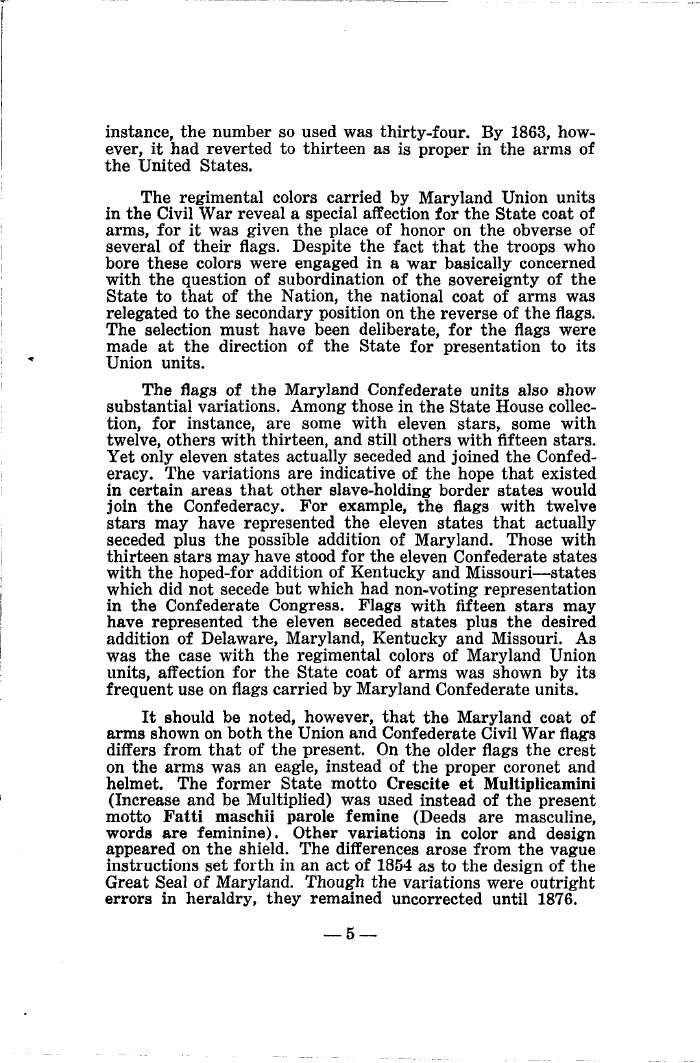 |
||||
 |
||||
| instance, the number so used was thirty-four. By 1863, however, it had reverted to thirteen as is proper in the arms of the United States. The regimental colors carried by Maryland Union units in the Civil War reveal a special affection for the State coat of arms, for it was given the place of honor on the obverse of several of their flags. Despite the fact that the troops who bore these colors were engaged in a war basically concerned with the question of subordination of the sovereignty of the State to that of the Nation, the national coat of arms was relegated to the secondary position on the reverse of the flags. The selection must have been deliberate, for the flags were made at the direction of the State for presentation to its Union units. The flags of the Maryland Confederate units also show substantial variations. Among those in the State House collection, for instance, are some with eleven stars, some with twelve, others with thirteen, and still others with fifteen stars. Yet only eleven states actually seceded and joined the Confederacy. The variations are indicative of the hope that existed in certain areas that other slave-holding border states would join the Confederacy. For example, the flags with twelve stars may have represented the eleven states that actually seceded plus the possible addition of Maryland. Those with thirteen stars may have stood for the eleven Confederate states with the hoped-for addition of Kentucky and Missouri—states which did not secede but which had non-voting representation in the Confederate Congress. Flags with fifteen stars may have represented the eleven seceded states plus the desired addition of Delaware, Maryland, Kentucky and Missouri. As was the case with the regimental colors of Maryland Union units, affection for the State coat of arms was shown by its frequent use on flags carried by Maryland Confederate units. It should be noted, however, that the Maryland coat of arms shown on both the Union and Confederate Civil War flags differs from that of the present. On the older flags the crest on the arms was an eagle, instead of the proper coronet and helmet. The former State motto Crescite et Multiplicamini (Increase and be Multiplied) was used instead of the present motto Fatti maschii parole femine (Deeds are masculine, words are feminine). Other variations in color and design appeared on the shield. The differences arose from the vague instructions set forth in an act of 1854 as to the design of the Great Seal of Maryland. Though the variations were outright errors in heraldry, they remained uncorrected until 1876. _ 5 _ |